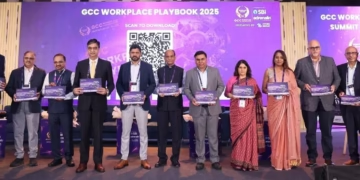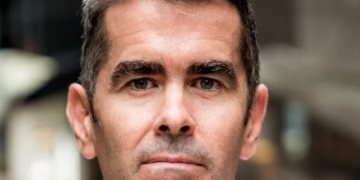6 MAY 2019 | Geneva, Switzerland – In the context of the Fifth UN Global Road Safety Week (6-12 May 2019), thousands of road safety advocates from around the world are highlighting the need for more effective leadership for road safety. Strong leaders – both government and nongovernment alike – are those who #SpeakUp for road safety and act on the concrete interventions which have proven to save lives.
“WHO’s vision is a world free from road traffic deaths and injuries” notes World Health Organization Director-General, Dr Tedros Adhanom Ghebreyesus. “It’s also a world in which all people benefit from universal health coverage, including trauma care, rehabilitation and psychological support for road traffic victims. This week and every week, play your part in making the roads safe for everyone. A safer road for others is a safer road for you.”
Despite progress, road traffic deaths continue to rise, with an annual 1.35 million fatalities. Road traffic injuries are now the leading killer of children and young people aged 5-29 years. Globally, of all road traffic deaths, pedestrians and cyclists account for 26% and motorcycle riders and passengers account for 28%. The risk of a road traffic death remains three times higher in low-income countries than in high-income countries, with rates highest in Africa (26.6 per 100 000 population) and lowest in Europe (9.3 per 100 000 population).
“Road traffic deaths and injuries are an unacceptable price to pay for mobility,” notes WHO Director, Dr Etienne Krug. “There is no excuse for inaction. This is a problem with proven solutions. Governments and their partners must demonstrate leadership and accelerate action to save lives by implementing what works.”
In the settings where progress has been made, it is because of strong leadership around legislation on key risks such as speeding, drinking and driving, and failing to use seat-belts, motorcycle helmets and child restraints; safer infrastructure like sidewalks and dedicated lanes for cyclists and motorcyclists; improved vehicle standards such as those that mandate electronic stability control and advanced braking; and enhanced post-crash care.
Among hundreds of other events planned for the road safety week are:
- assessing journeys and generating concrete demands from policy-makers in more than 50 countries – from Brazil to Mongolia and Nigeria to Pakistan – for example, calls for upgrading of pedestrian crossings in Trinidad and Tobago; reducing speed limits in Slovenia; increasing the use of seat-belts in Kazakhstan and child restraints in Chile; enhancing post-crash care by mandating that cars give way to ambulances in India and covering the costs of medical treatment for road traffic victims in Rwanda through a “mutuelle de santé”; and enhancing law and law enforcement generally;
- advocating for safe roads for children in many countries, by installing speed limit signs around schools in Argentina, Senegal and Tunisia, promoting motorcycle helmets for children in Malaysia and training school bus attendants in Nepal;
- showcasing road safety leaders in countries such as Jordan, Lebanon and Philippines;
- hosting global or national policy fora like the International Roundtable ‘Road Safety and the SDGs – What Target for 2030?’ in the United Kingdom as well as parliamentary discussions including in Tanzania; and
- launching new global initiatives such as the Commonwealth Road Safety Initiative and the first Global Fleet Champions Awards.
To demonstrate its leadership in road safety, WHO has developed a comprehensive, “Road Safety and Vehicle Management Policy.” The policy aims to ensure that WHO vehicles are operated safely to reduce the risk of road traffic crashes and that its fleet is professionally managed. The policy addresses such issues as the behaviour of WHO staff and drivers on the roads, ensuring that they avoid speeding and drinking and driving and wear seat-belts. The policy introduces driver training, including first aid training, and standardization of the road traffic crash reporting system. Among many other initiatives planned during the road safety week, WHO offices will host various activities to support implementation of the policy.
Leadership for road safety is a key component of efforts at national and local levels and will be an important theme during the 3rd Global Ministerial Conference on Road Safety to be hosted by the Government of Sweden in Stockholm on 19-20 February 2020. Delegates from around the world from sectors such as transport, health, interior and others will review progress in the Decade of Action for Road Safety 2011-2020 and define the urgent steps needed to accelerate action to reach road safety targets, including the 12 newly established global performance targets.
5th UN Global Road Safety Week highlights need for strong leadership
6-12 May 2019

The Fifth UN Global Road Safety Week acknowledges that strong leadership is needed to advance road safety in countries and communities and achieve related Sustainable Development Goal and other global targets. Thousands of advocates worldwide are taking the opportunity of the Week to #SpeakUp for road safety and call for urgent action on the concrete interventions which have proven to save lives. Such measures, featured in the WHO SaveLIVES technical package, include improving road safety management; making roads, vehicles and road users safe; and enhancing emergency care following a crash. Despite progress in many countries, road traffic deaths continue to rise, with an annual 1.35 million fatalities. Road traffic injuries are now the leading killer of children and young people aged 5-29 years. This is an unacceptable price to pay for mobility. Whether we travel as pedestrians, cyclists, motorcyclists or drivers, all of us – as parents, students, employees, volunteers and concerned citizens – can be leaders for road safety. When the right to a safe journey is a priority, everybody wins!














































